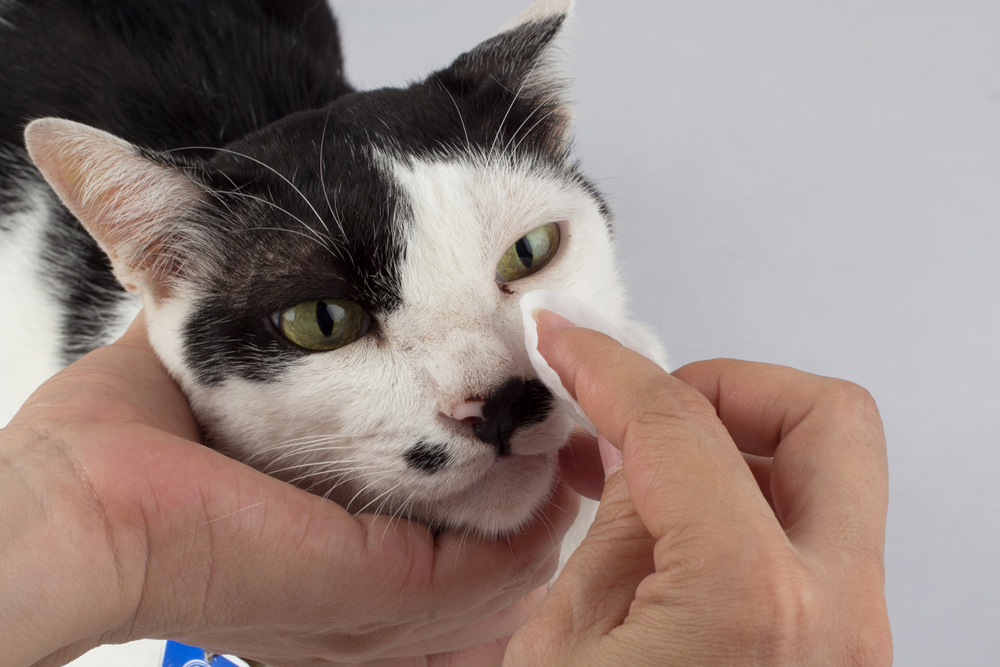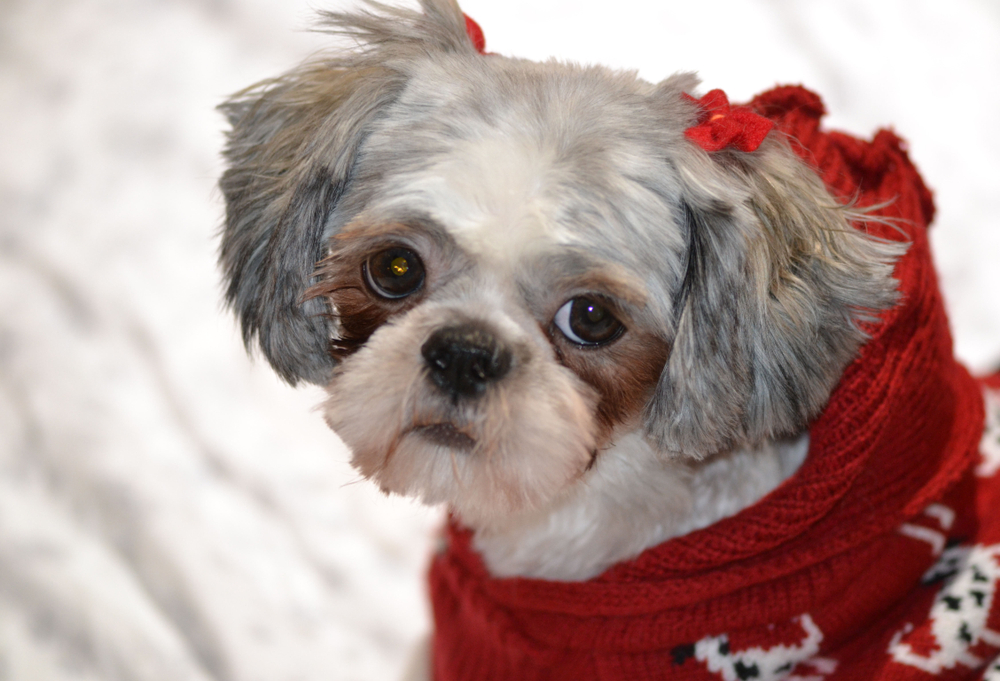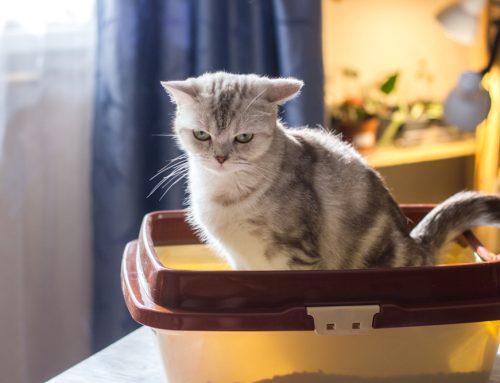Tear staining is an unsightly and frustrating problem for many pet owners, although the stains are generally harmless to pets. However, sudden or increased staining may signal an underlying health issue that requires veterinary treatment. Groves Veterinary Clinic has compiled the following guide to help you understand this condition in your pet, and to provide potential solutions.
What are tear stains in pets?
Although all pets produce tears, tear staining is most visibly apparent in light or white colored pets. The undeniable red or brown discoloration below the eyes, paws, and mouth of affected pets is the result of porphyrin (i.e., a molecule that is naturally excreted through the tears, saliva, urine, and gastrointestinal [GI] tract). Porphyrin contains iron, which gives tear stains their signature red, rust, or brown color.
Why do tear stains occur in pets?
In a healthy eye, tears lubricate the eye and drain through two tiny openings in the upper and lower eyelid nearest to the nose (i.e., the nasolacrimal ducts). These two ducts merge into a narrow tube and allow tears to drain into the nose and mouth, where they are excreted.
Tear staining occurs when this drainage system is overridden or blocked by structural abnormalities and worsened by secondary problems, such as bacterial or fungal skin infections. The most common causes include:
- Structure — Inherited characteristics, such as eye position, socket depth, skull shape, and eyelid conformation, can contribute to tear staining. The most common structural problems include:
- Entropion — In this condition, the eyelids roll inward and partially block the lacrimal duct.
- Medial canthal troughing — Skin at the eye corner creates a pocket and redirects tear flow to the face.
- Haired lacrimal caruncle — Long hairs in the eye corner wick tears from the eye to the surrounding hairs and face.
- Environment — External factors, such as water quality, nutrition, and contact allergies (e.g., plastic bowls and toys), may play a role in tear and facial staining.
- Grooming — Overgrown hair around the eye acts as an irritant and wicks moisture to the cheeks and muzzle. Staining may also be visible around the mouth.
- Skin infection — Yeast or bacterial overgrowth may cause skin and coat discoloration, especially in an area frequently wet from tears.
Because tear staining can signify an eye problem or skin condition, schedule an appointment with your veterinarian before attempting over-the-counter or DIY treatments.
Can tear stains be treated in pets?
Successful tear stain treatment relies on understanding the cause. During your visit to Groves Veterinary Clinic, Dr. Groves will perform a thorough ocular examination, looking for structural abnormalities and eye conditions (e.g., corneal ulcers or irritation), and a complete dermatological assessment to rule out allergies, infection, and grooming-related causes.
Because tear staining alone does not harm your pet, surgical correction for structural causes is generally not advised unless other signs (e.g., squinting, irritation, or sensitivity) are present. Bacterial and fungal infections may be treated with topical eye medication and enhanced daily under-eye care. If allergies are suspected, your veterinarian may advise a diet change that may involve replacing any plastic bowls with glass or metal, and switching to filtered water.
Managing and minimizing tear staining in pets
Follow up on your veterinarian’s recommendations with a diligent daily at-home eye care routine to reduce your pet’s staining and prevent skin irritation. Maintaining the skin and hair around your pet’s eyes will make the area less hospitable for harmful microorganisms and prevent the porphyrin buildup that leads to staining.
The following steps will minimize your pet’s tear staining and promote healthy skin:
- Cleanse — Clean the area below the eye with a warm wash cloth or cotton pad, or with a drop of tearless baby shampoo.
- Dry — After cleansing, gently pat the area dry with a clean wash cloth or cotton ball. Thoroughly dry the area to reduce skin irritation.
- Groom — Ask your pet’s groomer to shave below your pet’s eye to remove any long hairs that wick tears and trap moisture.
Removing tear stains in pets

You can use several tips and tricks to remove chronic tear stains. The most common options, which produce varying results, include:
- Contact solution — Apply contact solution that contains boric acid to a gauze square or wash cloth and carefully wash around the eye to remove stains, ensuring the product does not get in the eye.
- Antibiotic supplements — Several tear stain supplements contain tylosin powder, an antibiotic known to reduce tear staining. However, frequent low-level antibiotic use can create antibiotic resistant bacteria and GI problems, so these products are not typically recommended.
- Probiotics — Dietary probiotics may reduce tear staining in some pets.
Before attempting an at-home stain remedy, we suggest that you focus on healing and keeping the area dry. As new hair grows in and replaces the old, you should see less staining.
Tear stains don’t minimize your pet’s cuteness, but they could indicate a health issue. If your pet is plagued by unsightly tear stains, schedule an appointment at Groves Veterinary Clinic.






